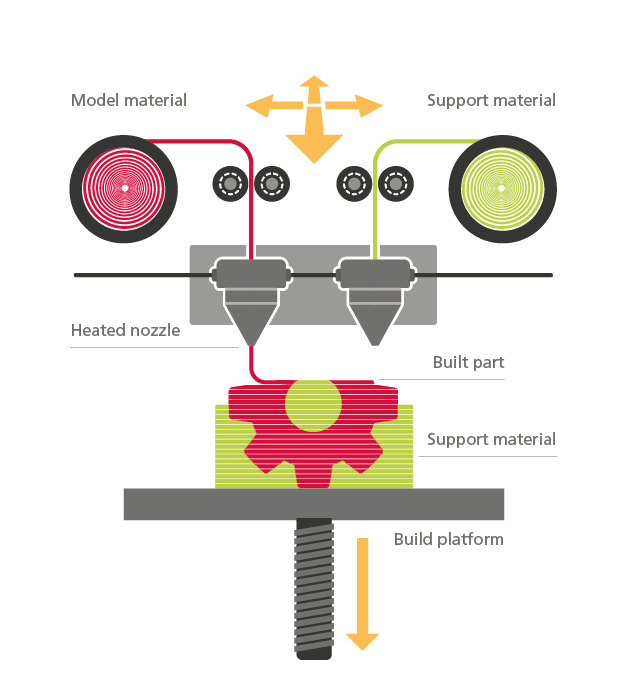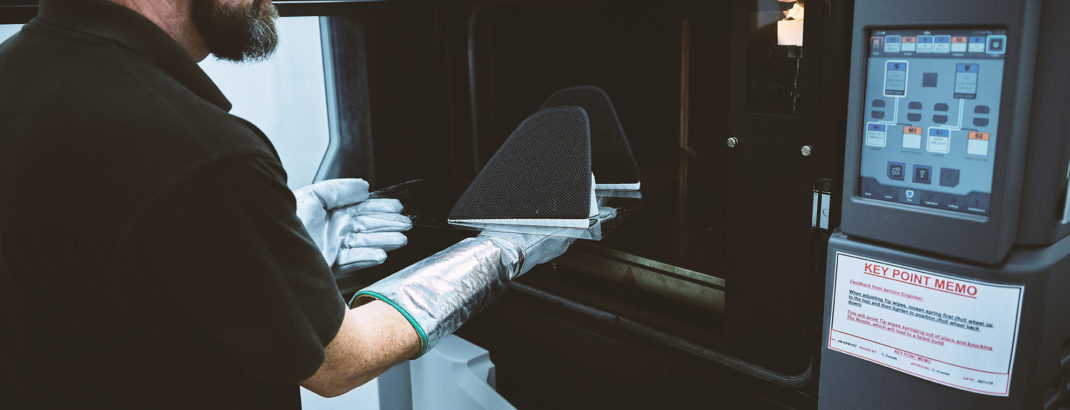Fused Deposition Modelling
Fused Deposition Modelling (FDM) is the most accessible 3D printing process, from home hobbyists through to full production systems, with rapid turnaround times and a wide range of materials and colours aimed at functional applications and design verification.
How does FDM work?

FDM constructs parts by extruding polymer through a heated nozzle, and depositing the melted material layer by layer.
These layers then cool and solidify, resulting in a printed part that offers high durability and heat resistance. FDM requires a sacrificial support material that is deposited via a second nozzle.
This second material is then easily removed using a simple post-process, which involves placing the printed part into a detergent to dissolve the support structure.
Read more of our FDM case studies to find out more about how Ricoh 3D has used 3D printing to limit the downtime of costly production lines.

